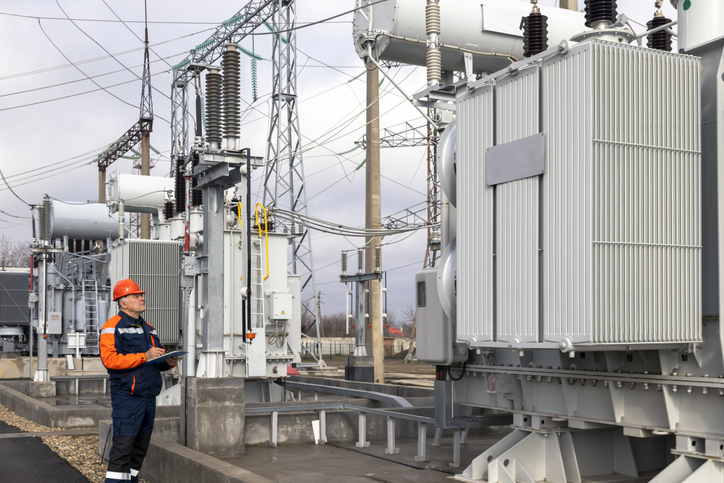Low Voltage vs. Medium Voltage Cables: Key Differences and Applications
Selecting the right low voltage cable or medium voltage cable is crucial for ensuring efficiency, safety, and compliance in electrical systems. The voltage rating determines the cable’s insulation, construction, and application. This guide explores the key differences between low vs. medium voltage wire to help you make an informed decision for your electrical system applications.
What Are Low Voltage Cables?
Low voltage (LV) cables are designed for electrical systems operating at up to 1,000 volts (1kV). These cables are commonly used in residential, commercial, and industrial settings where power transmission does not exceed this threshold.
Characteristics of Low Voltage Cables:
- Voltage Rating: Typically between 600V and 1kV
- Conductor Material: Copper or aluminum
- Insulation: PVC, XLPE, or rubber for enhanced protection
- Shielding: Often unshielded but may include shielding for electromagnetic interference (EMI) protection
- Flexibility: High flexibility for easy installation
Common Applications for Low Voltage Cables:
- Power distribution for residential and commercial buildings (e.g., wiring for lighting and outlets)
- Control and instrumentation circuits in industrial systems
- HVAC systems
- Industrial machinery wiring
- Data centers and telecommunications
What Are Medium Voltage Cables?
Medium voltage (MV) cables operate in systems with voltage ratings between 1kV and 35kV. These cables are designed for power distribution across larger distances, making them ideal for substations, utility networks, and industrial applications.
Characteristics of Medium Voltage Cables
- Voltage Rating: 1kV to 35kV
- Conductor Material: Copper or aluminum (typically larger cross-sections for high power loads)
- Insulation: XLPE or ethylene propylene rubber (EPR) for enhanced thermal resistance
- Shielding: Always shielded with metallic layers (copper tape or wire) to manage electrical stress and reduce interference
- Outer Jacket: Typically made of PVC or polyethylene for durability in harsh environments
Common Applications for Medium Voltage Cables
- Power distribution from substations to commercial and industrial facilities
- Underground and overhead power transmission
- Renewable energy systems (wind and solar farms)
- Oil and gas operations
- Railways and transportation infrastructure
Low Voltage vs. Medium Voltage Cables: A Quick Comparison
|
Feature
|
Low Voltage Cable
|
Medium Voltage Cable
|
|---|---|---|
|
Voltage Range
|
Up to 1kV
|
1kV to 35kV
|
|
Applications
|
Building wiring, industrial control, data centers
|
Power distribution, substations, renewable energy
|
|
Insulation Material
|
PVC, XLPE, rubber
|
XLPE, EPR
|
|
Shielding
|
Sometimes shielded for EMI protection
|
Always shielded for electrical stress management
|
|
Flexibility
|
More flexible for easier installation
|
Stiffer due to insulation and shielding
|
|
Installation Environment
|
Indoor and controlled industrial settings
|
Harsh environments, underground, outdoor use
|
Choosing the Right Cable for Your Application
When selecting between low voltage cables and medium voltage cables, consider the following factors:
- Voltage Requirements – Ensure the cable meets your system's operating voltage.
- Application Environment – Consider whether the cable will be installed indoors, outdoors, underground, or in harsh conditions.
- Regulatory Compliance – Verify that the cable adheres to industry standards such as UL, IEC, IEEE, and NEC requirements.
- Shielding Needs – If interference or electrical stress is a concern, opt for a shielded MV cable.
For expert guidance on choosing the right low vs. medium voltage wire, explore our selection of high-quality cables from top manufacturers like Alpha Wire, Southwire, and Belden.
Browse our full selection of power cables or contact our team for expert recommendations!
Related Resources

CSA & UL Style Comparison Guide
In the world of electrical applications, choosing the right wire is essential for a seamless and efficient connection. Learn More
Expert Guide to Industrial Automation Cables
Since the early days of manufacturing, automation has played a crucial role. As technology forges ahead, so does the need for reliable industrial automation cables to connect and network components for data exchange. Learn More
Power Distribution System Design for Industrial Environments
Industrial environments require power. A reliable power distribution system ensures that the heavy machinery, lighting, and control systems work without interruption. Electrical systems require special planning and diligence. Learn More


